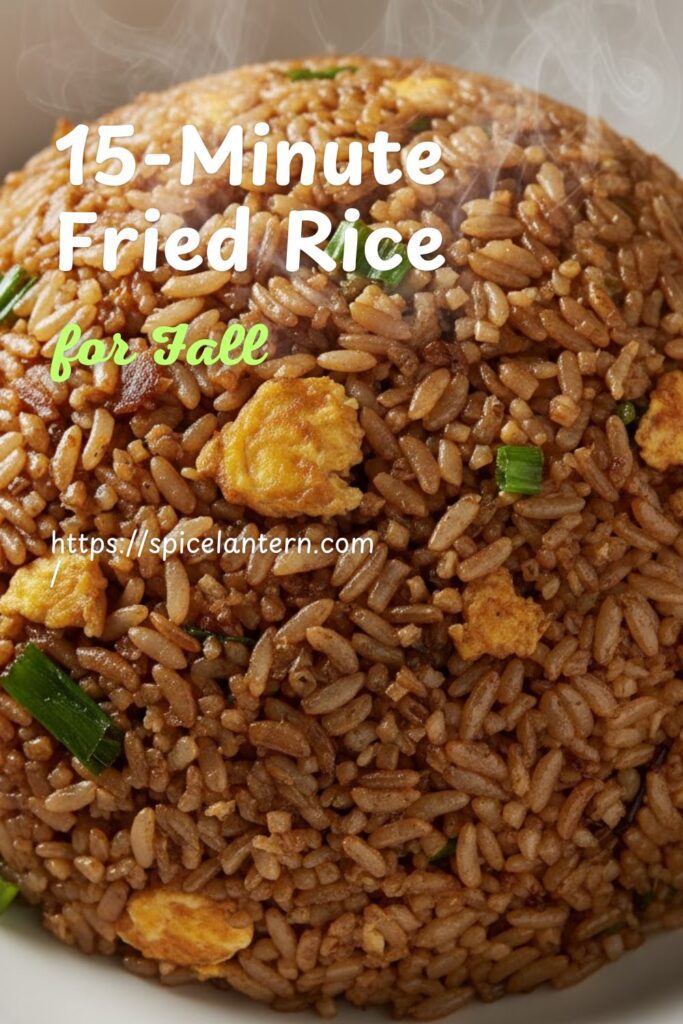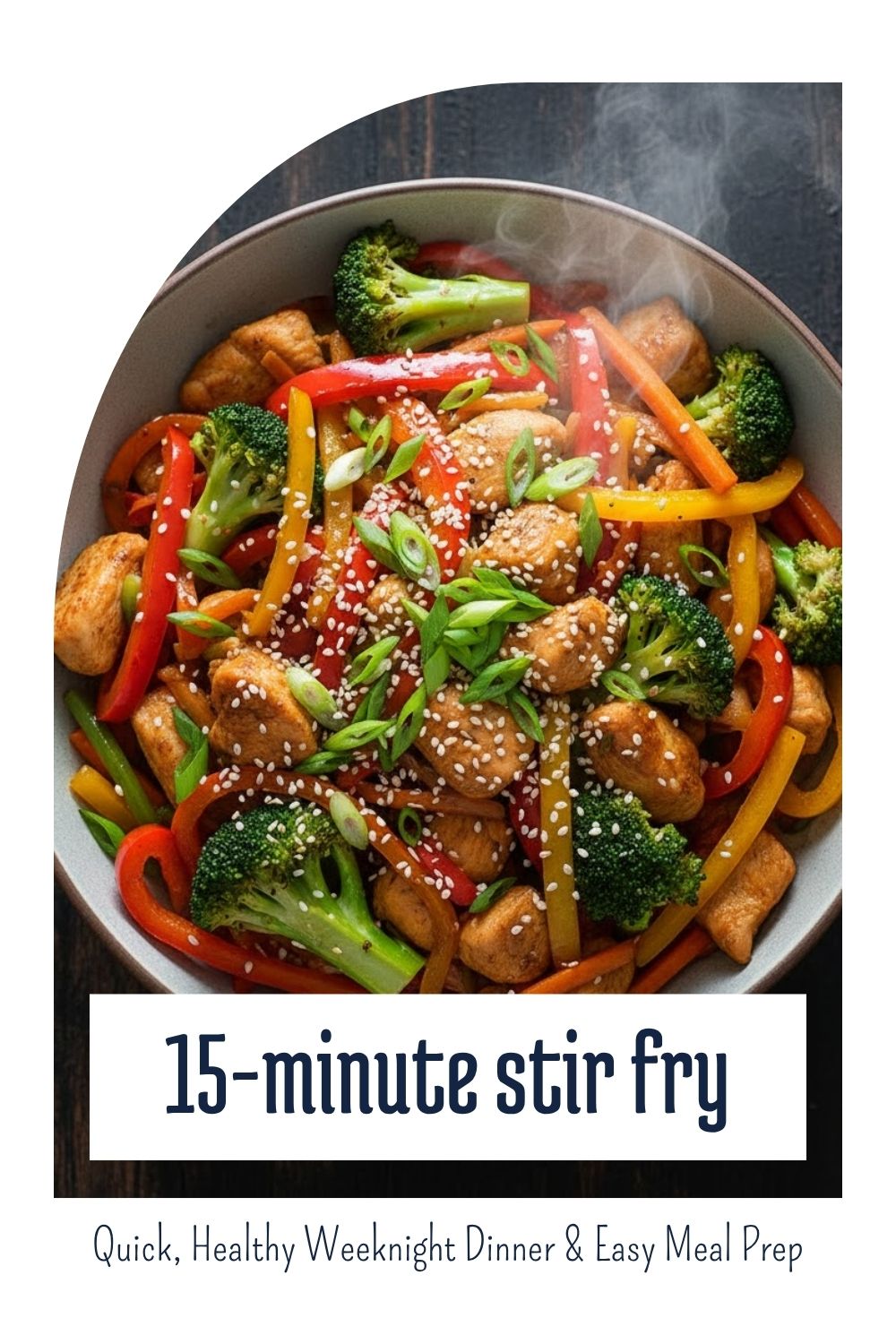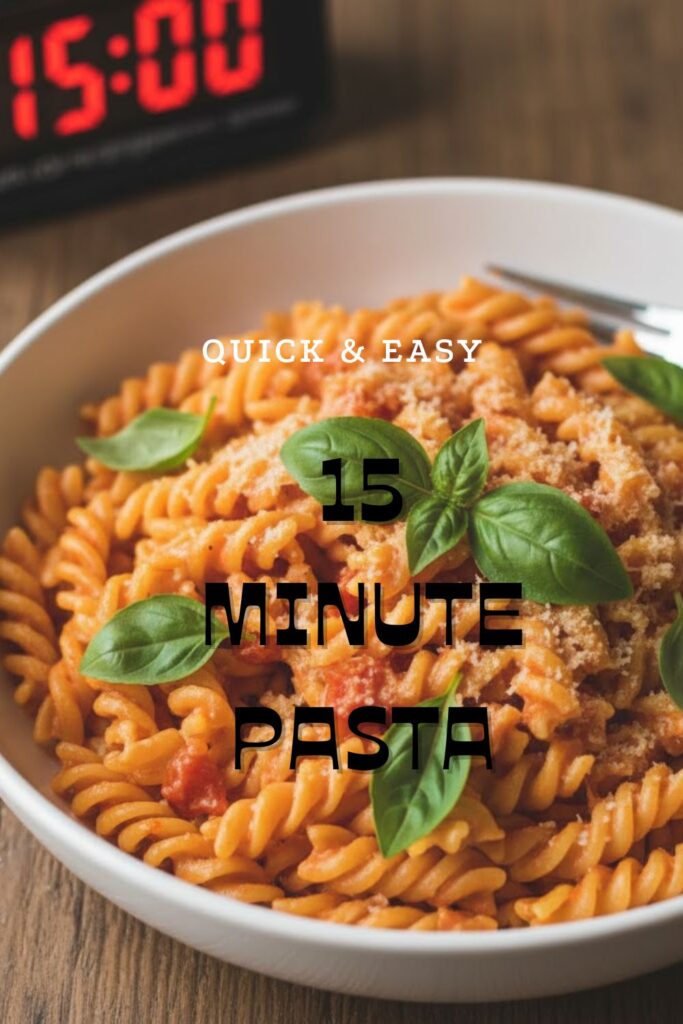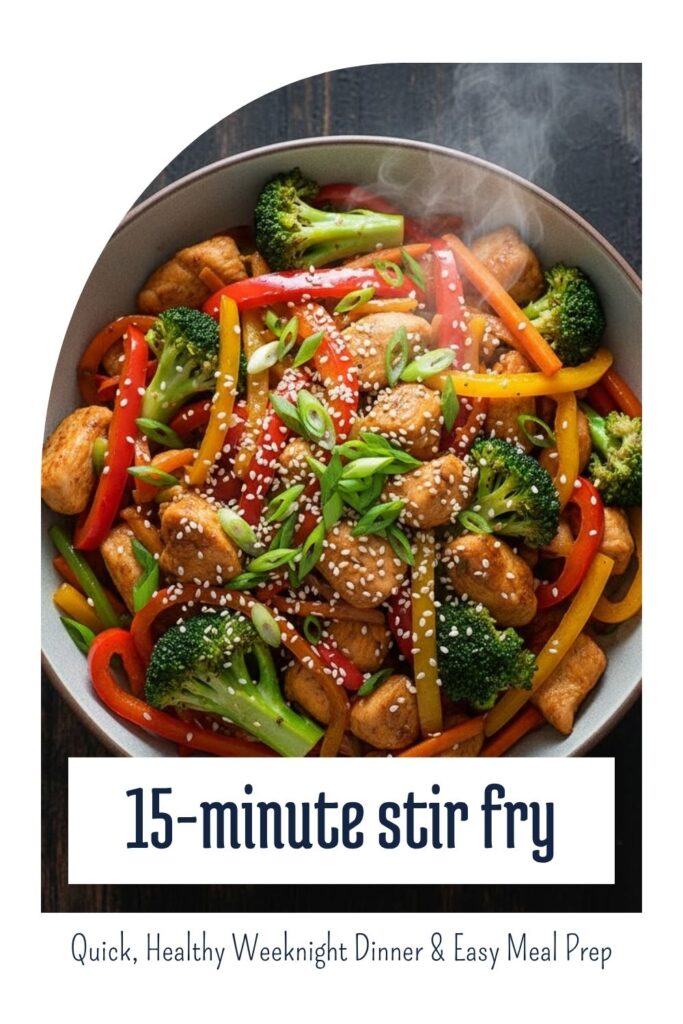Day-Old Rice is the Hero: Your Guide to Perfect 15-Minute Fried Rice
Confession: every sad, clumpy pot of rice I’ve ever seen just screams for a glow-up. Fried rice is the ultimate answer to the “what do I do with this leftover rice” problem. I used to think restaurant-quality fried rice required a gigantic wok and fire shooting from the stove, but I figured out the secret to making perfect 15-minute fried rice at home. This isn’t just about assembly; it’s about achieving that non-soggy, distinctly separate grain texture and the savory, umami flavor that blows takeout out of the water. Stop waiting 45 minutes for a delivery, and start cooking!
Why This Recipe Is Awesome (It’s a Leftover Masterpiece)
You need this in your life because it’s the quickest path to a deeply satisfying, savory meal.
- Actual 15-Minute Speed: The secret weapon is day-old, cold rice. Using cold rice is non-negotiable! It’s dry, firm, and won’t turn into sad, starchy mush when it hits the high heat. Everything else is pre-prepped or cooks in under five minutes.
- Non-Soggy Guarantee: We rely on high heat and minimal sauce liquid. This ensures the rice fries and caramelizes slightly, giving you that great wok hei (smoky flavor) effect, instead of steaming the whole dish.
- The Umami Bomb: The sauce uses a simple blend of ingredients that hit all the savory notes: salty, sweet, and rich. You can customize the fillings, but the flavor base always slays.
Ingredients: The Core and the Crunch
Get your mise en place ready! Speed depends on having everything pre-chopped.
- 3 cups Cold, Day-Old Cooked Rice (Medium or Long Grain): MANDATORY. Break up any clumps with your hands before you start.
- 2 tablespoons Neutral Oil (Peanut, Canola, or Avocado): You need high heat, so use a high smoke point oil.
- 2 large Eggs: Lightly beaten with a pinch of salt.
- 1 cup Mixed Veggies (Finely diced): Frozen peas and carrots (thawed), finely diced onion, and sliced scallions.
- 1 cup Pre-cooked Protein (Diced): Leftover chicken, shrimp, ham, or cubed firm tofu. Keep it warm for faster cooking!
- The Sauce (Whisked Separately):
- 2 tablespoons Soy Sauce (or Tamari): For salt and primary color.
- 1 teaspoon Dark Soy Sauce (Optional): For a rich, dark color and subtle sweetness.
- ½ teaspoon Sugar: Balances the salt.
- ½ teaspoon Toasted Sesame Oil: Essential aromatic finish.
Key Substitutions:
- Rice: You can use day-old quinoa or cauliflower rice for a healthier, lower-carb alternative.
- Protein: Use edamame or cashews for a delicious vegetarian crunch.
- Dark Soy Sauce: If you don’t have it, use another tablespoon of regular soy sauce but the color won’t be as deep.
Tools & Kitchen Gadgets Used: High Heat Heroes
You don’t need a wok, but a heavy, wide pan is essential.
- Large Wok or Wide, Heavy Skillet (Cast Iron or Stainless Steel): CRITICAL. You need high, even heat and lots of surface area.
- Rubber Spatula or Wooden Spoon: For scraping and tossing.
- Small Bowl: For mixing the sauce. Do this first!
- Cutting Board and Sharp Knife: For quick dicing.
- A Fork: For fluffing and separating the cooked rice.
Step-by-Step Instructions: The Flash Fry Method
Work fast and keep the pan hot! We move through this like a true chef.
Step 1: Prep and Sauce (3 Minutes)
- Chop everything (if you haven’t already). Have all ingredients measured out and placed in bowls right next to the stove. Speed depends on organization.
- Whisk the sauce ingredients together (Soy, Dark Soy, Sugar, Sesame Oil). Set aside.
Step 2: Eggs and Aromatics (3 Minutes)
- Heat your wok/skillet over high heat. Once smoking, add half of the neutral oil.
- Pour in the beaten eggs. Scramble the eggs quickly, breaking them into small pieces. Cook for about 60 seconds, then remove the eggs immediately and set them aside. Don’t overcook them!
- Add the remaining oil to the smoking hot pan. Toss in your onion and pre-cooked protein (if using raw shrimp, cook it now). Stir-fry for 2 minutes until the onion is fragrant.
Step 3: Rice Goes In (4 Minutes)
- Add the cold rice and frozen/thawed peas and carrots to the hot pan. Use your spatula to press the rice down onto the pan surface, then scrape and toss vigorously.
- Fry the rice for 2-3 minutes, pressing down to achieve a slight caramelization (browning). This is the frying part, not the steaming part!
Step 4: The Glaze Finish (2 Minutes)
- Pour the whisked sauce mixture over the rice.
- Toss constantly and quickly for about 60 seconds until the rice is evenly coated and the sauce has reduced into a glaze. Do not let the sauce pool!
- Toss the scrambled eggs back into the rice. Stir to combine and heat through.
Step 5: Serve and Garnish (3 Minutes)
- Remove the fried rice immediately from the heat.
- Stir in the sliced scallions (green parts only) for a final burst of fresh, pungent flavor.
- Serve immediately! Go ahead, grab a fork and take a smug bite.
Calories & Nutritional Info: The Quick Facts (Estimated)
These are estimates for one generous serving, including egg and moderate veggies/protein.
- Calories per serving (1/2 the recipe): ~450-550 calories
- Carbohydrates: ~60-75g
- Protein: ~15-25g (Excellent protein source, depending on add-ins.)
- Fat: ~15-20g
- Resistant Starch Bonus: The process of cooking rice, cooling it overnight, and reheating it creates resistant starch, which is a type of fiber that benefits gut health! Winning!
Common Mistakes to Avoid: From Chef to Steamer
Avoid these pitfalls that ruin the texture and flavor of fried rice.
- Using Fresh Rice: The unforgivable sin. Freshly cooked rice is full of moisture and starch, leading to a soggy, sticky, clumpy mess when fried. Always use day-old, cold, refrigerated rice.
- Low Heat Limbo: Cooking on medium heat is a disaster. You need HIGH heat to evaporate moisture and actually fry the rice grains. Low heat equals steaming.
- Overcrowding the Pan: Too many ingredients at once drops the pan temperature, forcing everything to steam. Cook in batches if your pan is too small for the amount of rice.
- Adding Sauce Too Early: Pouring liquid sauce over the rice too soon kills the heat and makes the rice wet and mushy. Add the sauce in the last minute after the rice has already fried.
- The Stale Oil Offense: You need enough oil to coat the rice and keep the pan slick, but not so much that the rice is greasy. Start with the measured amount and add a tiny drizzle only if the pan looks bone dry.
Variations & Customizations: Your Rice World Tour
This recipe is a canvas. Start painting!
- Pineapple Chili Twist (Hawaiian Style): Add ½ cup of diced fresh pineapple and 1 teaspoon of sweet chili sauce to the pan with the veggies. Use ham or shrimp as the protein.
- Ginger-Garlic Tofu (Vegetarian Swap): Use cubed firm tofu. Stir-fry 1 tablespoon of grated fresh ginger with the garlic. Finish with a drizzle of lime juice instead of dark soy sauce.
- Kimchi & Pork Belly (Korean Fusion): Cook diced pork belly until crispy and remove. Use the rendered fat to fry the rice. Add ½ cup of chopped kimchi with the rice. Finish with the crispy pork belly and a fried egg on top.
FAQ Section: Fried Rice Truths
You’ve got questions about rice and wok hei. We have answers.
Q1: Can I use freshly cooked rice if I can’t wait a day?
A: Yes, but chill it first! Spread the hot, freshly cooked rice on a baking sheet in a thin layer and place it in the freezer for about 15-20 minutes. This flash-chills and dries the grains enough for a decent fry.
Q2: What kind of rice is best for fried rice?
A: Cold, day-old long-grain white rice (like jasmine or basmati) is ideal because the grains separate nicely. Medium-grain works too, but avoid short-grain (sushi rice) as it clumps easily.
Q3: How do I get that smoky “wok hei” flavor at home?
A: Use a carbon steel wok or a cast iron skillet and crank the heat to HIGH. The key is high heat and slightly burning the oil and sauce quickly onto the surface of the rice, which creates the smoky compounds.
Q4: What is the dark soy sauce for?
A: Dark soy sauce is mainly for color and richness. It is thicker and slightly sweeter than regular (light) soy sauce. It gives the fried rice that deep, appetizing mahogany brown color.
Q5: Should I rinse the rice before cooking it?
A: Yes. Rinsing uncooked rice removes excess starch, which makes the grains less sticky when cooked and helps them separate better later when you fry them.
Q6: How long does fried rice last in the fridge?
A: Due to the sensitive nature of cooked rice, you should consume homemade fried rice within 3-4 days. Cool it quickly and store it in an airtight container.
Q7: Should I add the oil to the wok first, or the rice?
A: Oil first, always! Heat the wok/skillet until smoking, then add the oil. Swirl it to coat. Adding cold oil to a cold pan before turning on the heat is another way to guarantee sticking.
Final Thoughts: Takeout is Officially Obsolete
You just transformed humble leftovers into a savory, globally recognized dish in 15 minutes. You mastered 15-Minute Fried Rice and proved that high-quality, fast food is absolutely achievable in your own kitchen. Go ahead, take that smug, satisfying bite. You’re too efficient for the takeout menu now.







